Basic Information on Function & Facts
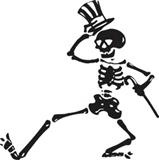
The skeleton is what provides the framework for your body tissues. It protects your organs and allows for movement. It is where red and white blood cells are created along with platelets. Bones store salts the body can later use. The calcium in bones aids in clot formation, the contraction of muscles and nerve conduction. An adult human has 206 bones (on average).
Breaking it Down: Level 1: the AXIAL & the APPENDICULAR
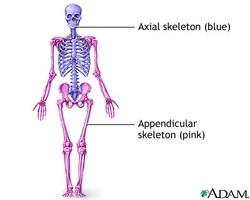
The axial skeleton is made of the 80 bones that are not part of the body's appendages. They include the skull, rib cage, and vertebral column. Theses bones are intented to protect vital organs like the heart and brain.
The appendicular skeleton is comprised of about 126 bones that form the body's limbs. These bones include the bones that create the shoulders, arms, legs, hands and feet. The lower bones are involved in locomotion such as walking and jumping. The upper bones are intended for more intricate tasks that involve complex manipulation of outside objects.
The appendicular skeleton is comprised of about 126 bones that form the body's limbs. These bones include the bones that create the shoulders, arms, legs, hands and feet. The lower bones are involved in locomotion such as walking and jumping. The upper bones are intended for more intricate tasks that involve complex manipulation of outside objects.
Breaking it Down: Level 2: Types of Bones
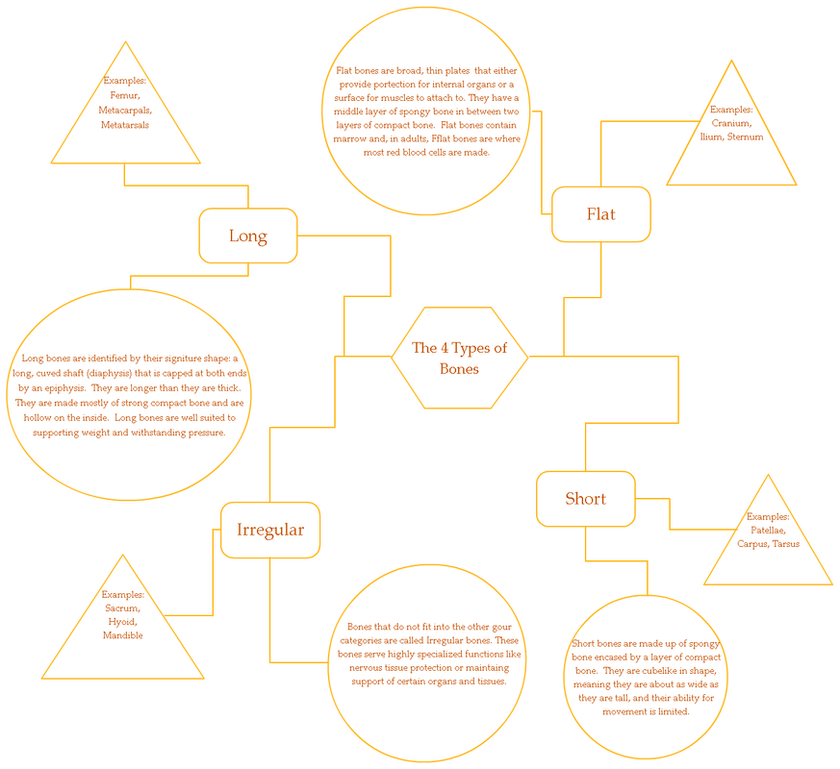
NOTE: There is another subcategory of bones know as sesamoid bones. They are classified as either short or irregular bones. They are found in the wrist and ankle and where tendons must cross a joint. They provide a better range of motion when the tendon tightens.
Breaking it Down: Level 3: Bone Tissues
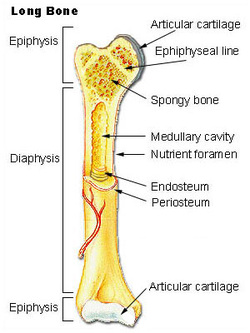
The periosteum is a fibrous multi-layered sheath that surrounds the other two layers of bones accept for where there is articular cartilage. It is incorporated where tendons and ligaments attach to the bone. It allows tendons and ligaments to assert and anchor themselves into the bone. It consists of two layers: the outer formed mainly of connective tissue and the inner layer of finer, elastic fibers that form membrane networks. It is houses osteoblasts.
Compact bone, or cortical bone, is the hard part of the bone. However, at a microscopic level, it is actually not made of such densely packed cells. It has canals, canaliculi, which are filled with blood vessels. All of theses canals feed into larger canals known as Haversian canals. These canals make the bone hollow. Compact bone is made of osteocytes and never cells.
Spongy bone, or cancellous tissue, is not named such because it is spongy. It is due its spongy, lacey appearance that is gets this name. The cancellous tissue, especially in long bones, in adults house red and yellow bone marrow wheer red blood cells are made and yellow marrow is stored as fat.
Compact bone, or cortical bone, is the hard part of the bone. However, at a microscopic level, it is actually not made of such densely packed cells. It has canals, canaliculi, which are filled with blood vessels. All of theses canals feed into larger canals known as Haversian canals. These canals make the bone hollow. Compact bone is made of osteocytes and never cells.
Spongy bone, or cancellous tissue, is not named such because it is spongy. It is due its spongy, lacey appearance that is gets this name. The cancellous tissue, especially in long bones, in adults house red and yellow bone marrow wheer red blood cells are made and yellow marrow is stored as fat.
Breaking it Down: Level 4: Basic Bones Cells
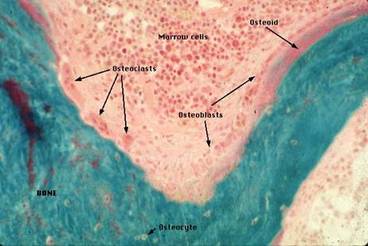
Osteoblasts are bone forming and effecting cells. The produce bone by producing an organic extracellular matrix that will become mineralized bone. They affect changes in bone structures and are found in the periosteum.
Osteoclasts are large, multinucleated cells that break down (absorb) osseous tissue. They play a large part in the growth, healing and remodeling of bones. They are found in the lacunae, or little spaces, they carve out for themselves.
Osteoclasts are large, multinucleated cells that break down (absorb) osseous tissue. They play a large part in the growth, healing and remodeling of bones. They are found in the lacunae, or little spaces, they carve out for themselves.
Second Helping: Joints & Ligaments
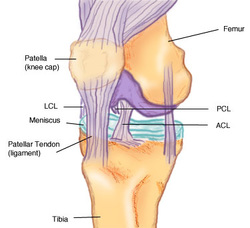
Ligament, when used in anatomy, most commonly refers to tissue that connects bone to to other bones.
Joints are where two or more bones make contact. Joints are classified by structure and function. Structual classifications are fibrous joint (connected by fibrous tissue), cartilaginous (connected by cartilage) and synovial joint (not directly connected). The functional classifications are synarthrosis (permit limited or no mobility), amphiarthrosis (slightly mobile) and diarthrosis (permit much movement, all synovial joints).
Joints are where two or more bones make contact. Joints are classified by structure and function. Structual classifications are fibrous joint (connected by fibrous tissue), cartilaginous (connected by cartilage) and synovial joint (not directly connected). The functional classifications are synarthrosis (permit limited or no mobility), amphiarthrosis (slightly mobile) and diarthrosis (permit much movement, all synovial joints).
